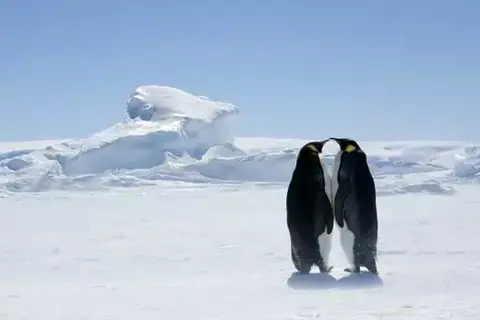7 Interesting Facts About Pumas
Amelia BThe cat puma is the largest cat in North America and the second-largest in the New World. They used to be sacred animals in some Indian tribes. When the Europeans came, pumas became an endangered species. This problem affected many animals that were massacred by the settlers. That’s not all the interesting facts about pumas. Pumas have many names: mountain lion, puma, panther. By this parameter, puma became a record-breaker, it was listed in the Guinness Book of Records as an animal with the most names. We’ve collected some of the most unusual facts about pumas for you. It’s a really rare animal species that deserves a lot of attention.
7 facts about pumas
 Photo by Pixabay on pexels
Photo by Pixabay on pexels1.The puma hunts very well. Approximately 82% of its output ends in catching prey. This is not wise in principle, given that this cat’s jump can be up to 12 meters long.
2.Besides, a puma never eats a scavenger. All its food, it catches and kills itself. There are cases when a puma attacks alligators and comes out the winner.
3.The puma has a very interesting way of communicating with the cubs. To call them or warn them of danger, she tweeted like a bird. In this dialect, she only communicates with kittens.
4.The puma’s main diet is deer and snow rams. But in hungry times, this big cat can even hunt insects.
5.The closer it gets to the equator, the fewer pumas it has. And conversely, closer to the poles, the pumas are getting bigger. It’s an anomaly only found in this family of cats.
6.Pumas go hunting at dawn or just after sunset. The rest of the time, they rest in a secluded place.
7.Pumas can speed up to 70 kilometers per hour. But it won’t take them long. But this sprint is enough for a successful hunt.
Top 3: The most interesting facts about Pumas
 Photo by Andrew Patrick on pexels
Photo by Andrew Patrick on pexels1.Pumas can overcome obstacles that are over 6 meters high. They climb trees very well. In general, hiding in the jungle from this predator is almost not real.
2.Everyone knows the gray or sandy skin of a puma. But few people know that kittens are spotty. They don’t get a monochrome color until the seventh month of their lives.
3.Leopards and pumas can be crossed. They make puma-leopards that can’t survive in the wild.
Little known facts about Pumas
Wherever puma lives, she’s at war with her hunting roommates. Bears in the north, jaguars in the south, and alligators in Florida, she fights for prey. But the only enemy they have is a man. People exterminate pumas for hides.
The Pumas are heavily guarded now. In Canada and the United States, any hunting for them is forbidden. But despite this, the population of pumas continues to decline, and perhaps our children will no longer see these magnificent animals.
Did you like interesting facts about pumas? Share it with your friends.
Facts About Pumas
 Photo by Jiří Mikoláš on pexels
Photo by Jiří Mikoláš on pexelsDid you know that pumas are one of the largest cats in the world? While many people may not be familiar with them, there are some interesting facts about pumas that you should know. For example, pumas can see quite a distance around them, and their large eyes enable them to see in the dark. In addition, their sharp, pointed ears allow them to hear their prey, which allows them to hunt them even in the dark.
Unlike other cats, pumas are omnivorous and have no problem destroying large carcasses. They hunt at close range and kill their prey in a matter of minutes. They will also cover the body with debris, which means that there is no chance of spoilage. When they have killed a large animal, pumas typically sleep within 50 meters of the carcass. On average, they feed on their kill for three nights. They will not stay in one spot on successive days.
Because pumas have adapted well to their environments, they are now considered an endangered species. These animals are in danger of extinction throughout their range. Some of these causes include habitat destruction, the introduction of exotic species, and over-exploitation of natural resources. Fortunately, these conservation efforts have prevented them from going extinct. You can read more about pumas and their fascinating nature in our next article. Facts About Pumas & Their Habitat
The most popular fact about pumas is that they live in Africa, Asia, and Europe. Despite their diversity, pumas are protected in their native range. They are the most widespread feline in these regions and are protected by various governments. They are known to eat large mammals, including rabbits, deer, and birds. The species is primarily found in the wild but is also a part of our urban landscape.
The Puma is closely related to domestic cats but is not in the same family as them. Its range is much wider than its habitat, and it is found in both tropical and coniferous forests. In the wild, pumas live in open plains and deserts. These animals are mainly nocturnal and crepuscular. They are nocturnal and are able to stalk their prey without warning.
Although pumas can be spotted and filmed in the wild, they are not protected by law. They are protected by local governments in several places. This means that the pumas are endangered. There are many reasons for this, including overexploitation of the natural resources that are important for their survival. And while there are a number of reasons why they are endangered, it is worth pointing out the facts about pumas that you may not know.
The Puma’s habitat is varied. Its habitat is generally mountainous, but it can be found in low-lying areas. In some areas, the Puma lives in lower-lying plains, where it thrives in both pastures and forests. Aside from its preferred habitat, the Pumas are invasive and may even threaten other species of animals. They also suffer from a number of diseases.
As mentioned above, the Puma is one of the few cats that are endangered. This means that the population of this cat is in danger of extinction in its range. The species is under threat in many ways, including overexploitation of its natural resources, and habitat destruction. This can result in the loss of this animal. It is therefore vital to protect the Pumas. The animals are not safe in every area. Luckily, there are a number of laws in place to protect animals.
The Puma is considered a species of great concern, as it is considered a threatened species throughout its range. Several factors contribute to the decreasing number of these animals. Some of these threats are due to habitat destruction, the introduction of foreign species, water pollution, over-exploitation of natural resources, and global warming. Nevertheless, it is important to protect the Puma in any country you visit. But there are some things that you should know about this animal before visiting its habitat.
The Puma’s fur is incredibly thick, and it is similar to that of other cats. In fact, the Puma has a thick coat of fur, which varies in color from brown-yellow to red, depending on the subspecies and location. As a predator, the Puma is a large, powerful animal, with a big head and powerful hind paws.
- RodentsCan A Hamster And A Cat Live Together?

- LivestockWhat Can’T Chickens Eat?By Amelia B

- LivestockWhat Can Goats Eat?By Khai Dove

- BirdsInteresting Budgerigar FactsBy Noah Young

- Wildlife20 Interesting Facts About BatsBy Khai Dove

- DogsWhat Is Chinchilla Life Expectancy?By Khai Dove

- WildlifeWhat Is The Elephant’S Weight?By Charlotte Green

- WildlifeSnow Leopard Habitat And ConservationBy Khai Dove

- BirdsInteresting Facts About Penguins LoveBy Khai Dove

- WildlifeInteresting And Surprising Facts About A White LionBy Evelyn Star
